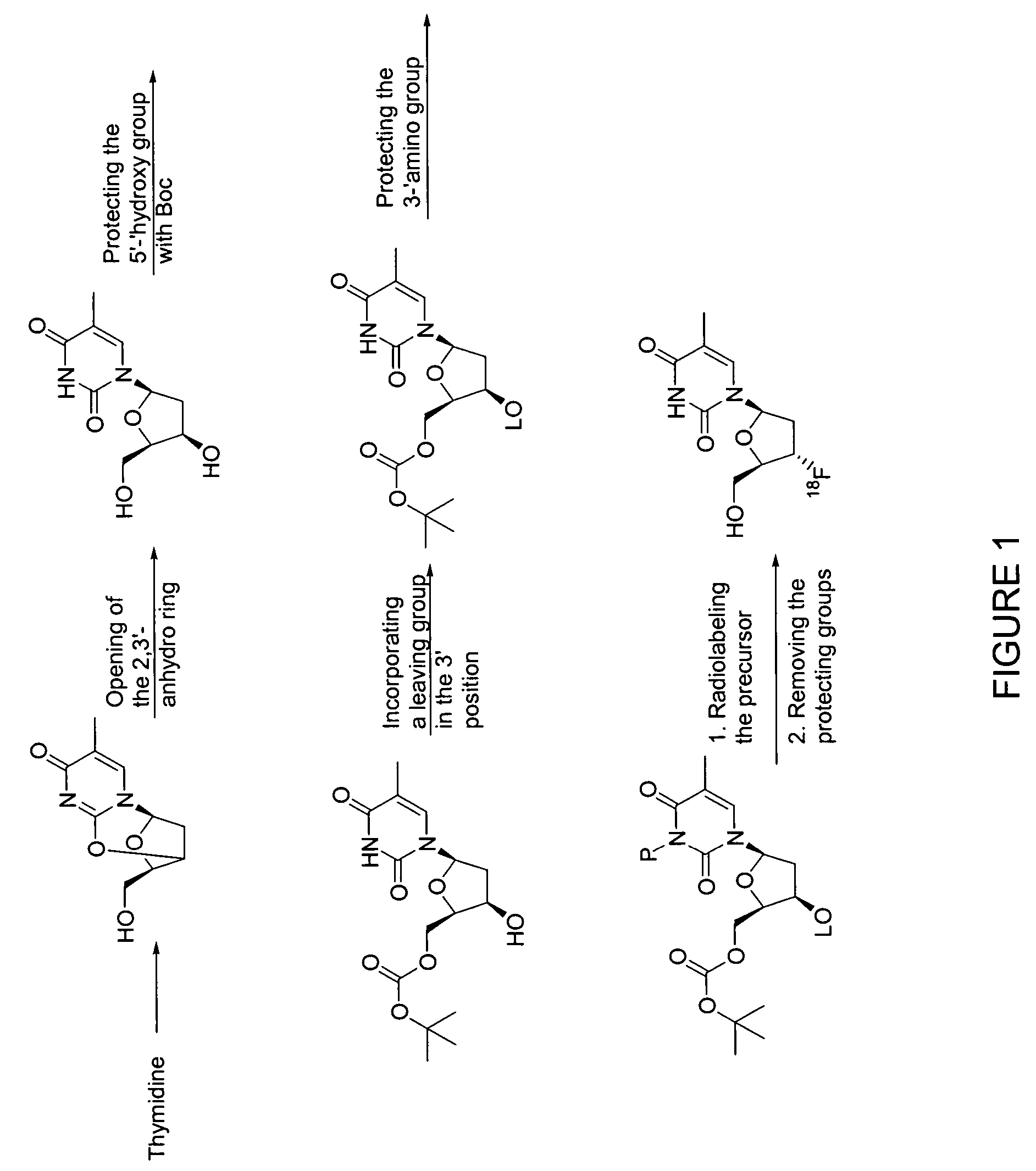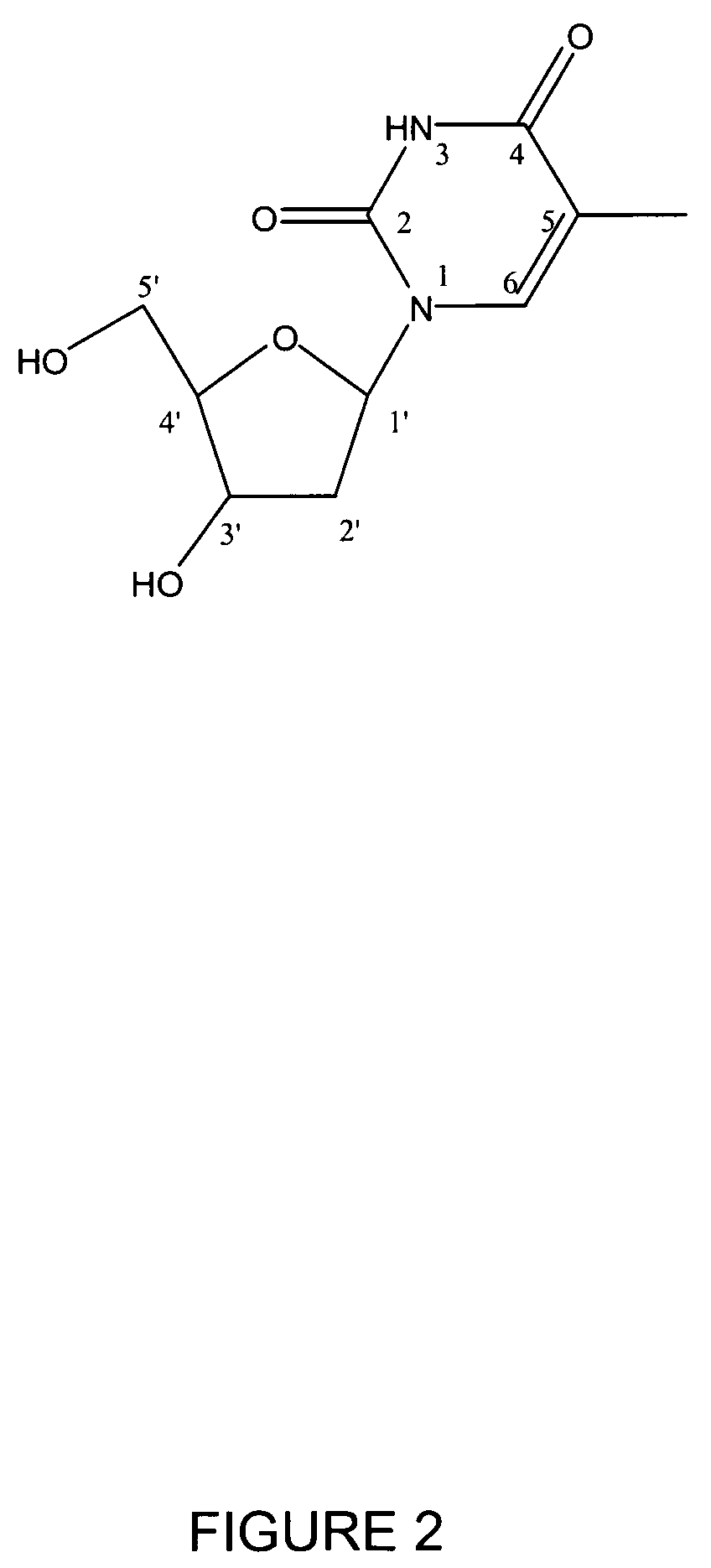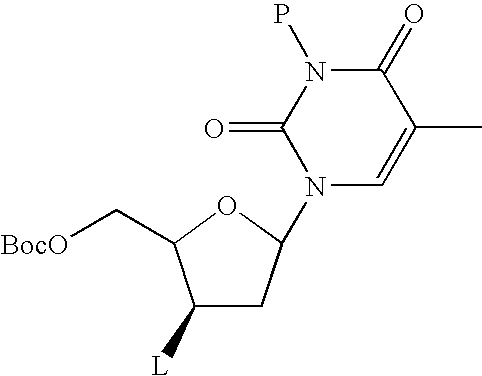Method for preparing radiolabeled thymidine having low chromophoric byproducts
a radiolabeled thymidine and byproduct technology, applied in the field of diagnostic imaging technique, can solve the problems of high cost, high reaction yield, and low reaction yield of typical methods for preparing sup>18/sup>f-flt, and achieve the effect of high yield
- Summary
- Abstract
- Description
- Claims
- Application Information
AI Technical Summary
Benefits of technology
Problems solved by technology
Method used
Image
Examples
example
Synthesis of the 18F-FLT Precursor
Step a: Synthesis of Anhydrothymidine.
[0055]To a dried round bottom flask containing thymidine(10.0 g, 41.6 mmol) was added triphenylphosphine (21.8 g, 82.2 mmol) and CH3CN (160 mL). The suspension was cooled to −20° C. ((40:60 iPrOH:H2O) and dry ice). To the reaction mixture was added diisopropylazodicarboxylate (16.8 g, 82.2 mmol) as CH3CN solution (60 mL) dropwise via an addition funnel, over a period of 1 hour. After the addition, the mixture was stirred for an additional 90 minutes at 20° C. The mixture was allowed to warm to 10° C. over a period of 5 hours. The reaction was then quenched with H2O (6 mL) forming a white suspension. The reaction was allowed to stand for 30 minutes and then was filtered. The collected solid was washed with cold CH3CN and dried under vacuum to afford 7.7 g (83% yield) of a white solid. If desired, the solid may be recrystallized in EtOH.
Step b: Synthesis of 3′-β-hydroxy thymidine.
[0056]To a round bottom flask cont...
PUM
| Property | Measurement | Unit |
|---|---|---|
| temperature | aaaaa | aaaaa |
| Positron emission tomography | aaaaa | aaaaa |
| PET | aaaaa | aaaaa |
Abstract
Description
Claims
Application Information
 Login to View More
Login to View More - R&D
- Intellectual Property
- Life Sciences
- Materials
- Tech Scout
- Unparalleled Data Quality
- Higher Quality Content
- 60% Fewer Hallucinations
Browse by: Latest US Patents, China's latest patents, Technical Efficacy Thesaurus, Application Domain, Technology Topic, Popular Technical Reports.
© 2025 PatSnap. All rights reserved.Legal|Privacy policy|Modern Slavery Act Transparency Statement|Sitemap|About US| Contact US: help@patsnap.com



